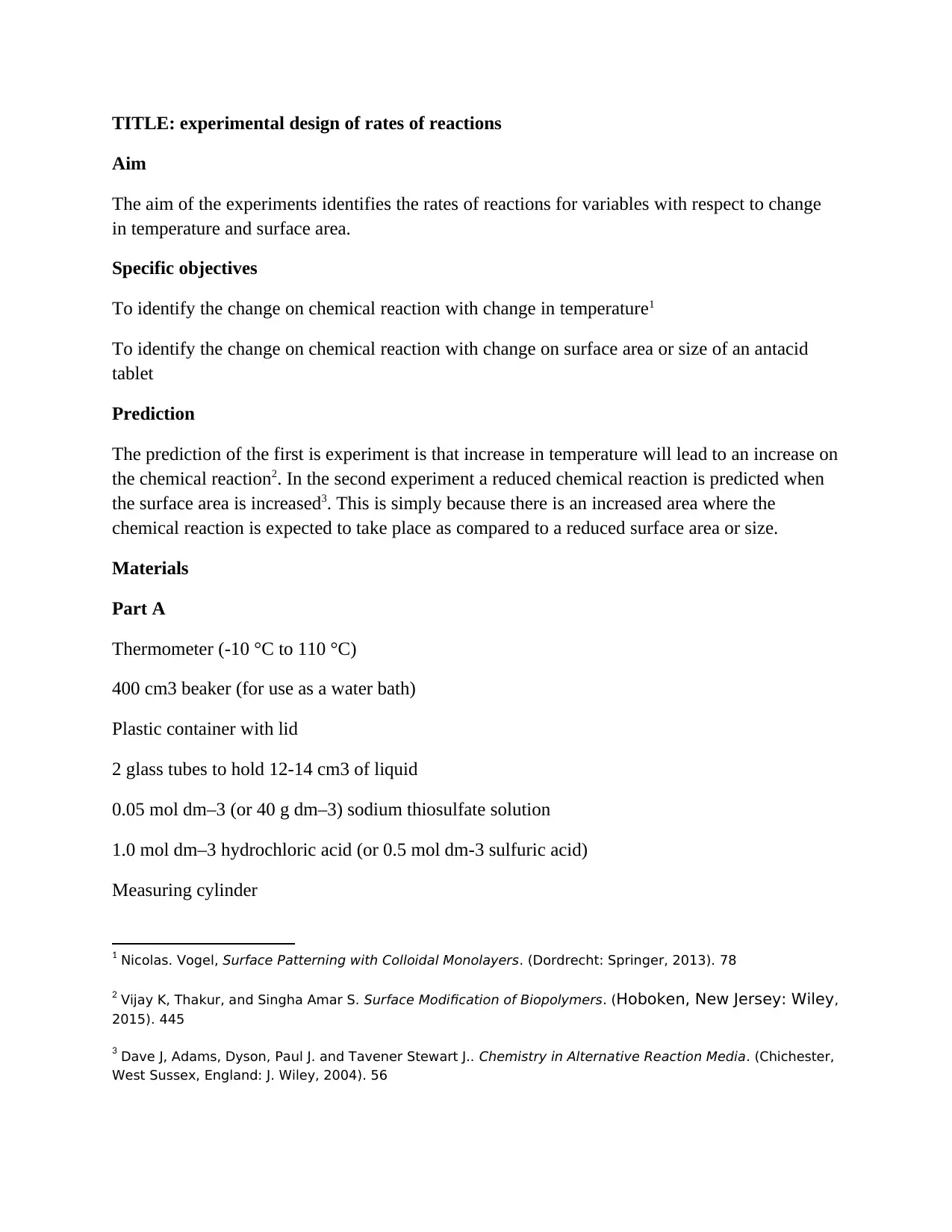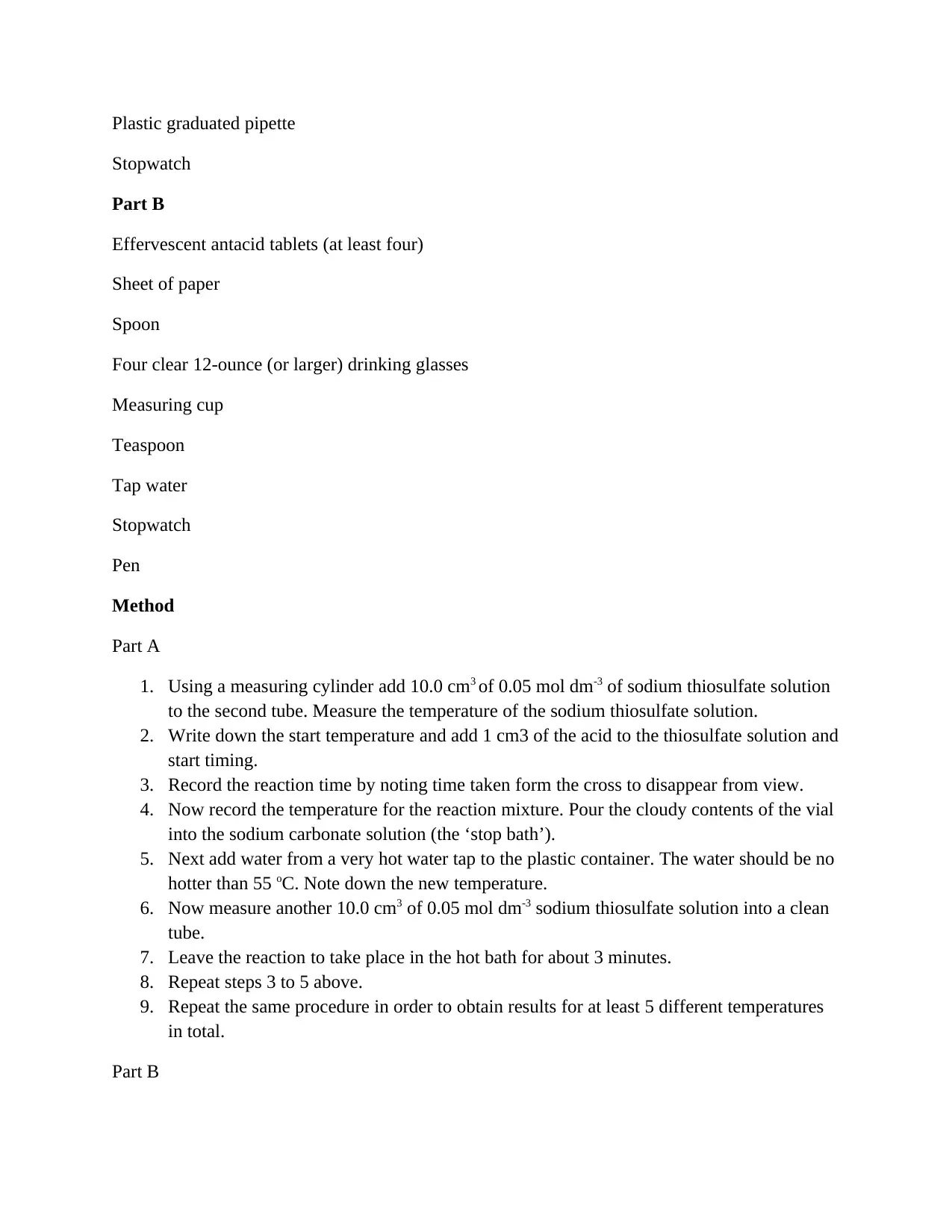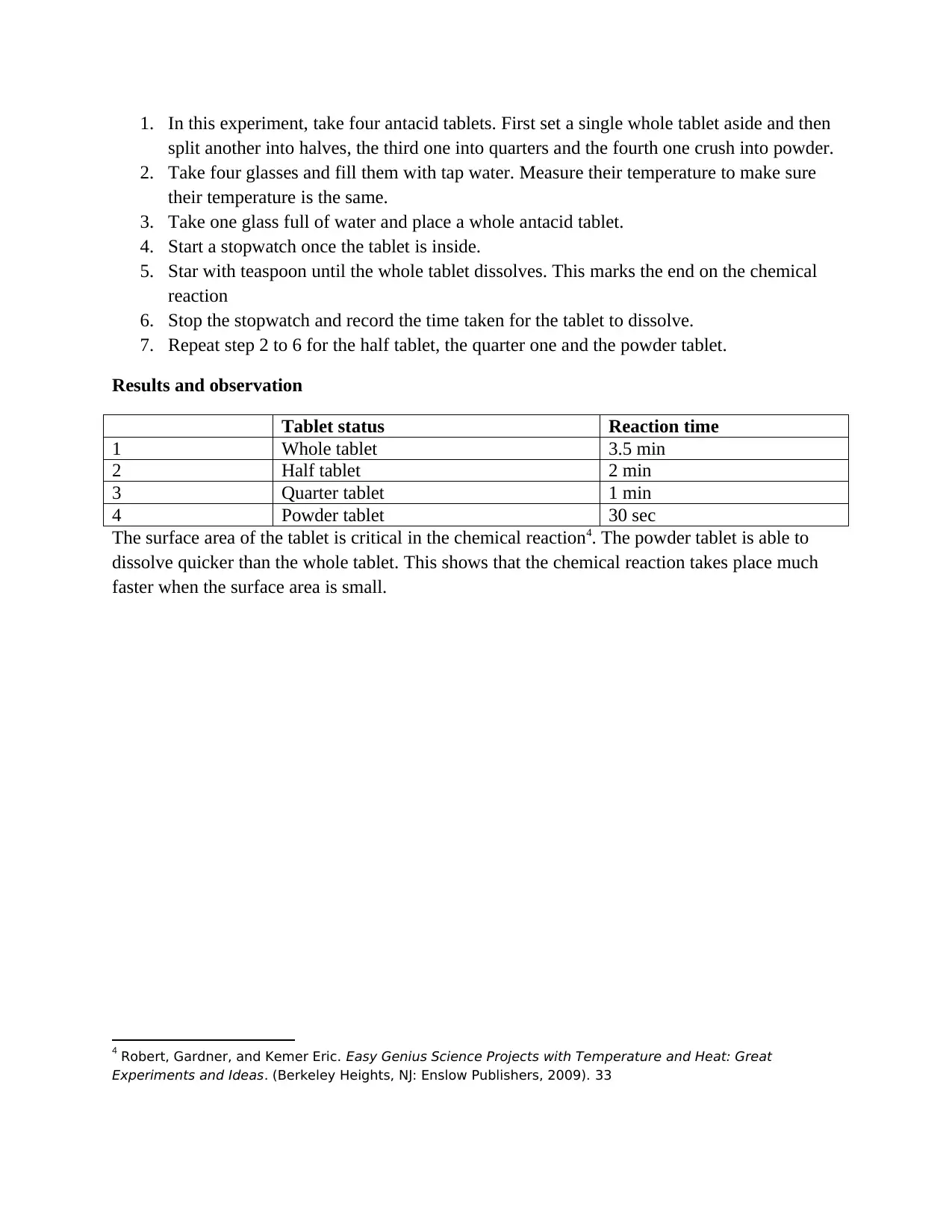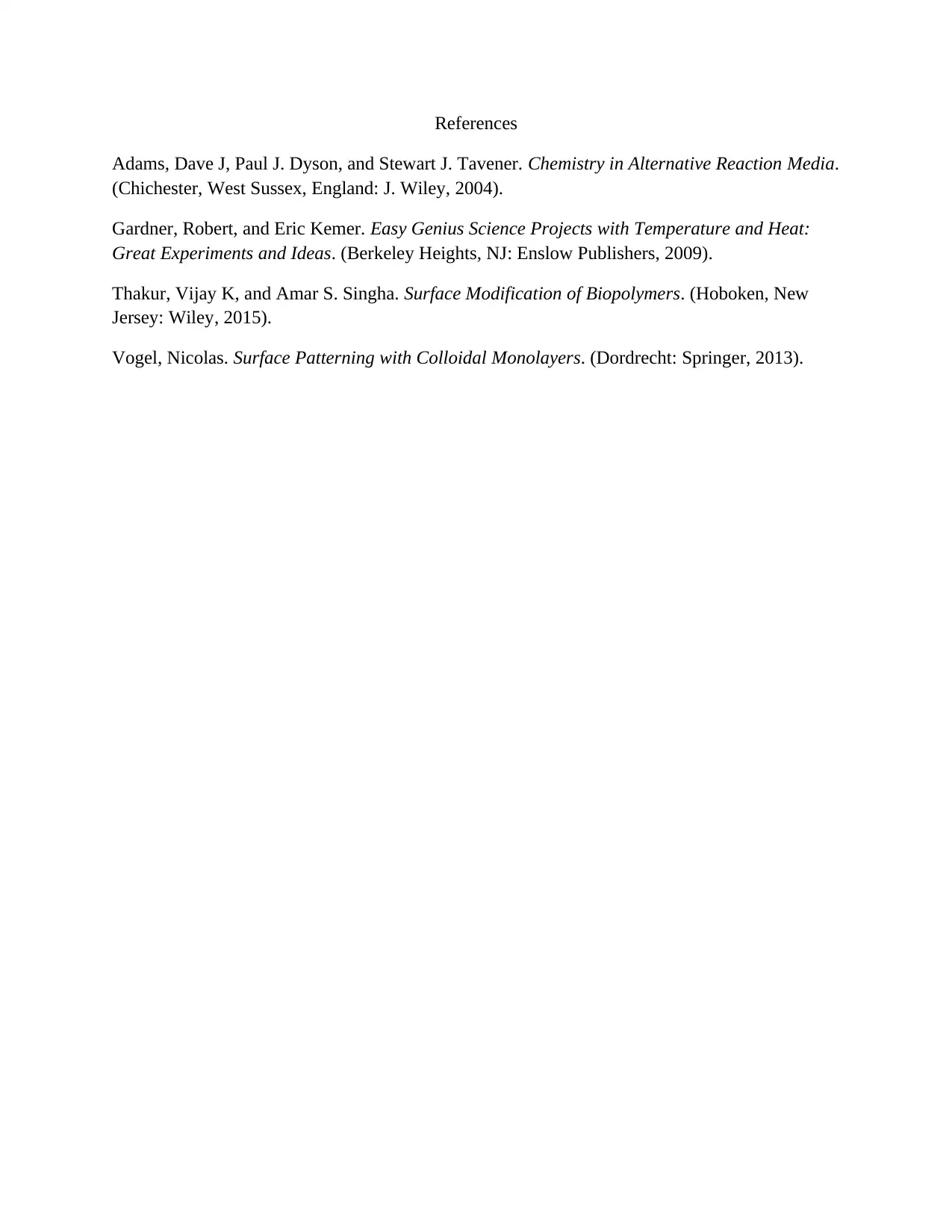Chemistry Experiment: Design to Study Rates of Reactions Factors
VerifiedAdded on 2023/06/11
|4
|877
|131
Practical Assignment
AI Summary
This practical assignment focuses on the experimental design to investigate the rates of reactions, specifically examining the effects of temperature and surface area. The first experiment aims to identify how changes in temperature affect the rate of a chemical reaction using sodium thiosulfate and hydrochloric acid. The procedure involves measuring the reaction time at different temperatures. The second experiment investigates the impact of surface area on the reaction rate using effervescent antacid tablets, where the tablets are tested in whole, halved, quartered, and powdered forms to observe the dissolution time. The results show that increasing the temperature increases the reaction rate, while decreasing the surface area (using powdered form) also increases the reaction rate. The conclusion highlights the critical role of temperature and surface area in influencing chemical reactions, supported by relevant references.
1 out of 4






![[object Object]](/_next/static/media/star-bottom.7253800d.svg)